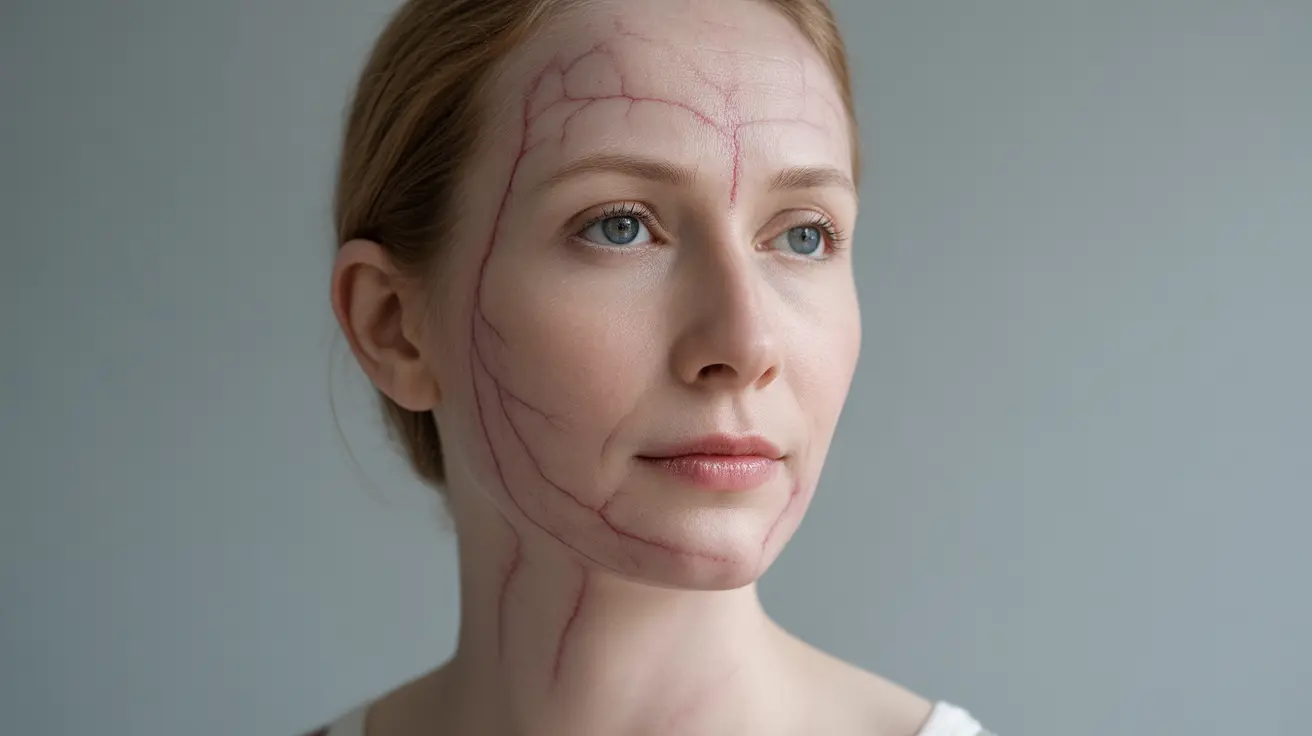Couperose skin, characterized by visible blood vessels and persistent facial redness, affects many individuals worldwide. This chronic skin condition can significantly impact both physical appearance and emotional well-being, making it essential to understand its causes, symptoms, and available treatment options.
While couperose skin can be challenging to manage, proper knowledge and care strategies can help minimize its appearance and prevent flare-ups. This comprehensive guide will explore everything you need to know about couperose skin and how to effectively care for it.
Understanding Couperose Skin and Its Causes
Couperose skin develops when small blood vessels near the skin's surface become dilated and visible, creating a network of red lines typically appearing on the face. This condition is closely related to rosacea and is often considered an early stage or mild form of it.
Common Causes and Risk Factors
Several factors can contribute to the development of couperose skin:
- Genetic predisposition
- Sun exposure and UV damage
- Extreme temperature changes
- Hormonal fluctuations
- Blood vessel weakness
- Aging process
- Alcohol consumption
- Spicy foods
Identifying Symptoms and Signs
Recognizing the symptoms of couperose skin is crucial for early intervention and proper management. The condition typically presents with:
- Visible red or purple capillaries
- Persistent facial flushing
- Sensitive skin that reacts easily
- Burning or stinging sensations
- Skin that appears thin or delicate
Prevention and Natural Management Strategies
While couperose skin cannot be completely cured, several lifestyle modifications and natural approaches can help manage symptoms:
Lifestyle Changes
Implementing these daily habits can help reduce flare-ups:
- Protect skin from sun exposure
- Avoid extreme temperature changes
- Stay hydrated
- Maintain a gentle skincare routine
- Avoid trigger foods and beverages
- Practice stress management
Natural Remedies
Several natural ingredients can help soothe and strengthen couperose skin:
- Green tea extracts
- Vitamin K
- Horse chestnut
- Chamomile
- Aloe vera
Medical Treatments and Professional Options
For more severe cases, several medical treatments are available:
- Laser therapy
- Intense Pulsed Light (IPL) treatment
- Prescribed topical medications
- Oral medications for associated conditions
- Sclerotherapy for larger vessels
Skincare and Makeup Recommendations
Choosing the right products is crucial for managing couperose skin:
Recommended Skincare Products
- Gentle, fragrance-free cleansers
- Mineral-based sunscreens
- Products containing niacinamide
- Ceramide-rich moisturizers
- Anti-inflammatory serums
Makeup Tips
The right makeup approach can help conceal redness while protecting sensitive skin:
- Use green-tinted primers
- Choose mineral-based foundations
- Avoid heavy, pore-clogging products
- Apply makeup gently
- Remove makeup thoroughly but gently
Frequently Asked Questions
What causes couperose skin and who is most at risk of developing it? Couperose skin is primarily caused by weakened blood vessels and genetic predisposition. Those with fair skin, a family history of the condition, and individuals over 30 are at higher risk. Environmental factors like sun exposure and lifestyle choices can also contribute to its development.
What are the common symptoms and visible signs of couperose skin? The main symptoms include visible red or purple capillaries on the face, persistent redness, sensitive skin that flushes easily, and occasional burning or stinging sensations. The condition typically appears on the cheeks, nose, and chin.
How can I prevent couperose skin flare-ups and reduce redness naturally? Prevention involves protecting skin from sun damage, avoiding extreme temperatures, maintaining a gentle skincare routine, and identifying personal triggers. Natural remedies like green tea, vitamin K, and chamomile can help reduce inflammation and strengthen blood vessels.
What medical treatments are available to manage or reduce couperose skin? Medical treatments include laser therapy, IPL treatments, prescribed topical medications, and sclerotherapy for larger vessels. These treatments should be performed by qualified healthcare professionals and may require multiple sessions for optimal results.
Which skincare products and makeup tips are best for sensitive, redness-prone couperose skin? Use gentle, fragrance-free skincare products containing soothing ingredients like niacinamide and ceramides. For makeup, opt for mineral-based products and green-tinted primers to neutralize redness. Always choose non-comedogenic products and apply them gently to avoid irritation.




